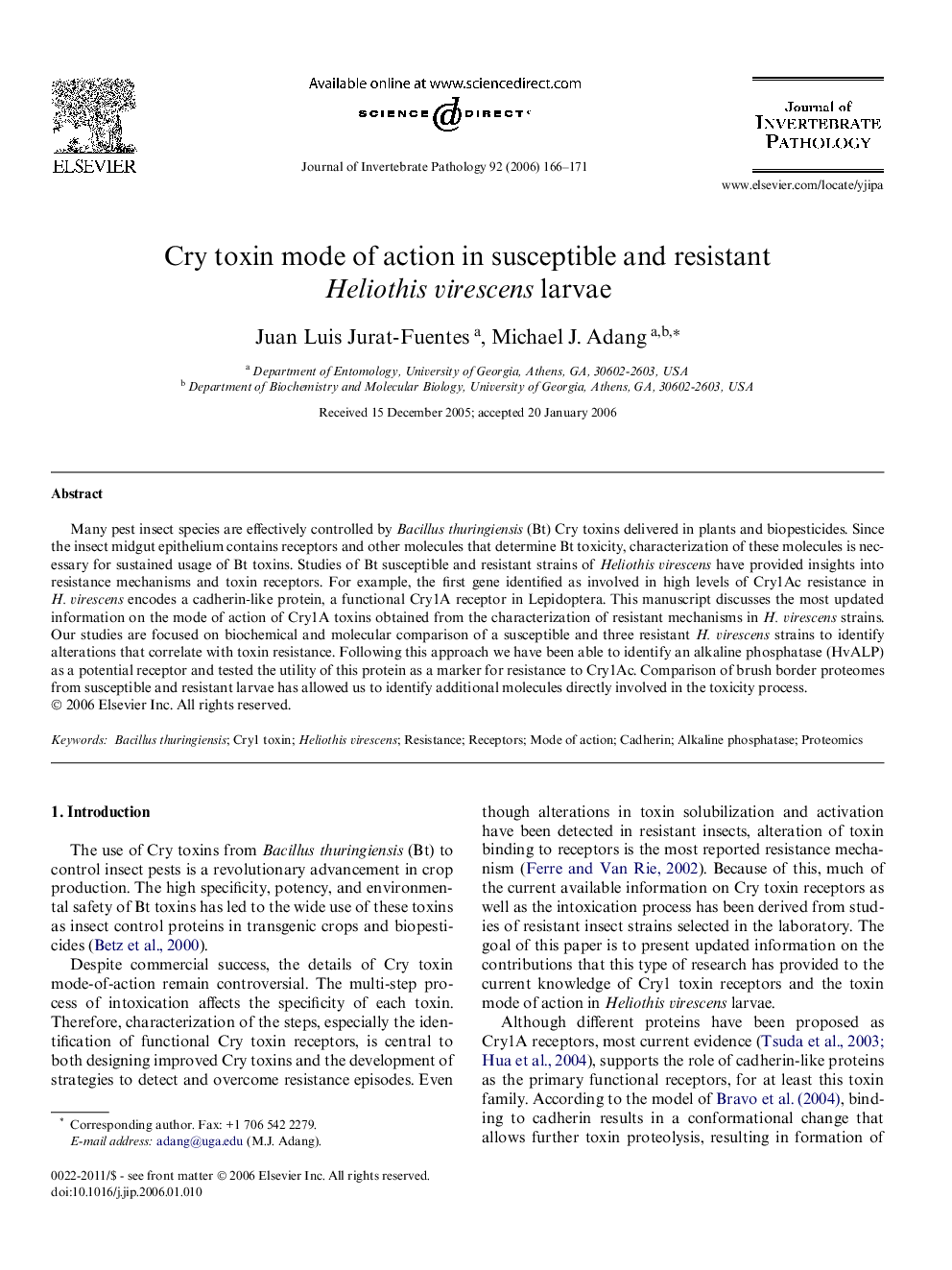| Article ID | Journal | Published Year | Pages | File Type |
|---|---|---|---|---|
| 4558811 | Journal of Invertebrate Pathology | 2006 | 6 Pages |
Many pest insect species are effectively controlled by Bacillus thuringiensis (Bt) Cry toxins delivered in plants and biopesticides. Since the insect midgut epithelium contains receptors and other molecules that determine Bt toxicity, characterization of these molecules is necessary for sustained usage of Bt toxins. Studies of Bt susceptible and resistant strains of Heliothis virescens have provided insights into resistance mechanisms and toxin receptors. For example, the first gene identified as involved in high levels of Cry1Ac resistance in H. virescens encodes a cadherin-like protein, a functional Cry1A receptor in Lepidoptera. This manuscript discusses the most updated information on the mode of action of Cry1A toxins obtained from the characterization of resistant mechanisms in H. virescens strains. Our studies are focused on biochemical and molecular comparison of a susceptible and three resistant H. virescens strains to identify alterations that correlate with toxin resistance. Following this approach we have been able to identify an alkaline phosphatase (HvALP) as a potential receptor and tested the utility of this protein as a marker for resistance to Cry1Ac. Comparison of brush border proteomes from susceptible and resistant larvae has allowed us to identify additional molecules directly involved in the toxicity process.
